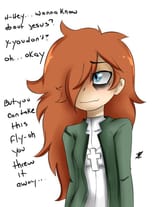>>516044745
Bullets do not consistently or reliably deflect off bone; whether a bullet deflects, fragments, or penetrates depends on numerous factors. Forget magic bullet myth but Instead, a bullet's path can be altered, or it can deform and break apart upon hitting dense bone.
>>>Factors that influence bullet behavior
Impact angle: This is one of the most important variables. An oblique or shallow impact angle is more likely to cause the bullet to ricochet or deflect off the bone's surface, particularly with low-velocity bullets. A direct, perpendicular hit is more likely to cause the bullet to penetrate or shatter the bone.
Bullet caliber and mass: Larger, heavier, and more powerful bullets are more likely to shatter or pass through a bone, while smaller, lighter rounds (like a .22) are more prone to being deflected.
Bullet velocity: A higher-velocity bullet delivers more energy to the target and is more likely to penetrate the bone. Lower-velocity rounds can lose significant speed and energy, making them more susceptible to deflection.
Bullet construction: The design of the bullet, including its shape and materials, affects its behavior upon impact.
Full metal jacket (FMJ) bullets are typically designed to pass through the target, but they can still be deflected by bone.
Soft or hollow-point bullets are designed to expand upon impact, which can cause them to deform or break apart when hitting bone, creating multiple smaller fragments.
Bone density: The density and composition of the specific bone play a role. For example, a young, healthy bone is much harder than a bone with osteoporosis. The thick, dense structure of the skull is more likely to cause a low-velocity bullet to deflect than a smaller rib bone.
Yaw: Even before hitting a bone, a bullet's trajectory can become unstable after it passes through skin and other tissue. This "wobbling" or "yawing" can cause its orientation to change before it strikes bone, resulting in an unpredictable deflection.
 9/15/2025, 12:28:36 AM
No.516037694
>>516038209
>>516038354
>>516038799
>>516039861
>>516040536
>>516040879
>>516041567
>>516042376
>>516042993
>>516043198
>>516043230
>>516043428
>>516043601
>>516043731
>>516043749
>>516044237
>>516044242
>>516044565
>>516044717
>>516044857
>>516044893
>>516045474
>>516045535
>>516045540
>>516045919
>>516046066
>>516046390
>>516046426
>>516046547
>>516046859
>>516047119
>>516047202
>>516047871
>>516047875
>>516048100
>>516048410
>>516048764
9/15/2025, 12:28:36 AM
No.516037694
>>516038209
>>516038354
>>516038799
>>516039861
>>516040536
>>516040879
>>516041567
>>516042376
>>516042993
>>516043198
>>516043230
>>516043428
>>516043601
>>516043731
>>516043749
>>516044237
>>516044242
>>516044565
>>516044717
>>516044857
>>516044893
>>516045474
>>516045535
>>516045540
>>516045919
>>516046066
>>516046390
>>516046426
>>516046547
>>516046859
>>516047119
>>516047202
>>516047871
>>516047875
>>516048100
>>516048410
>>516048764




















